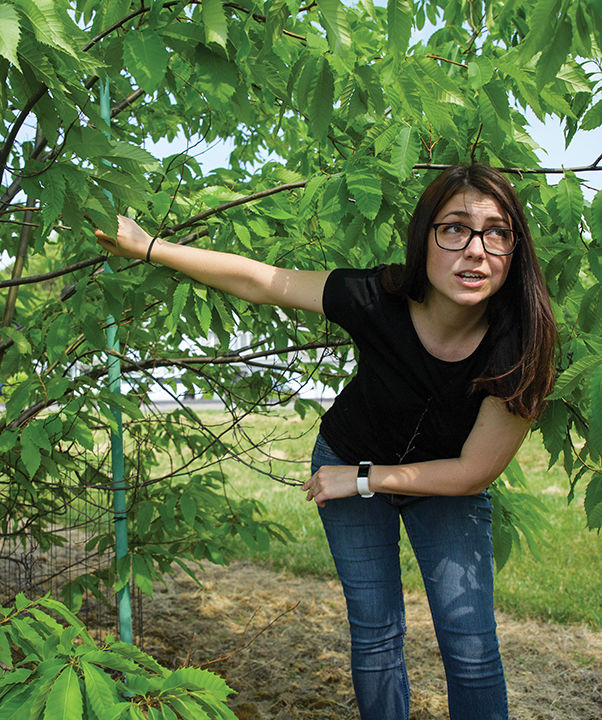This summer, the U.S. Department of Energy’s Joint Genome Institute, in collaboration with Penn State Behrend, completed sequencing of the genome for the fungus Gnomoniopsis castanea Behrend v1.0. It is the first time that the genome of a fungus in this genus has been sequenced, meaning it will act as the reference for the sequencing of other species of fungi.
The fungus was discovered on American chestnut trees being studied by Emily Dobry ’20 when she was a Behrend undergraduate student researcher for the Lake Erie Regional Grape Research Extension Center in North East, Pa. Dobry isolated the genome for the fungus as part of her master thesis research in horticulture.
“Initially, we assumed this was an unusual presentation of chestnut blight infection,” she said, “but after taking samples and doing research, we did not find blight, but a pathogen commonly known as chestnut brown rot. At the time, there had been no published report of this fungus in in our hemisphere.”
Dobry, who is now a Ph.D. student in Penn State’s Agricultural and Environmental Plant Sciences program, continues to study the strain.
